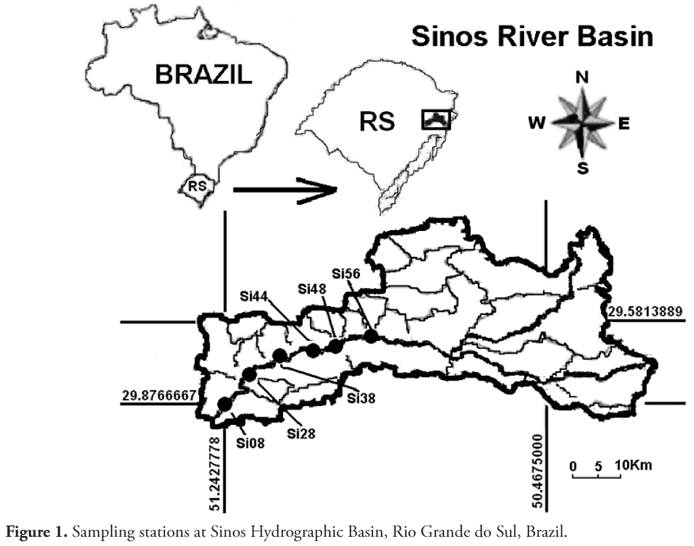AIM: The Sinos River, a tributary of Guaíba Lake, is 200 km long from the headwaters to the mouth and is influenced by several sources of pollution. A study to learn more about conditions in this river was performed in the middle and lower reaches. The study evaluated the effects of sediment contamination by xenobiotics on the survival and reproduction of Daphnia magna. METHODS: Eight sediment samples were collected per site from Dec/2007 to Aug/2009, as a substrate for 480 young cladocera (2-26 h old at the beginning of the trials) in chronic toxicity tests (21 days). For this purpose, D. magna individuals were exposed to sediment and M4 culture medium, at a proportion of 1:4 (v:v) using 50 mL beakers, kept at 20 ºC ± 2 ºC in 16h light:8h dark cycles. The test organisms came from lots with LC50-24h = 1.04 mgK2Cr2O7 ± 0.11 mg. Percentage survival and reproduction were considered to define acute and/or chronic responses. Duncan (p < 0.05) and T (p < 0.05) Tests, ANOVA and Spearman correlation of the biological data were used as statistical complementation. The Spearman correlation was also applied looking for dependencies between the rainfall measured at the sites and the biological parameters but there was no evidence of correlation. The presence of acute toxicity was diagnosed for the sample in which survival was less than 80%, and for chronic toxicity when the mean number of neonates was less than 20 daphniids. RESULTS: Reproductive delays were found coinciding with physical and chemical parameters, as well as the presence of metals at values that were not in accordance with the law. Statistical analysis suggested the predominance of point sources of contamination. An effect on survival was observed in 17% of the samples, and on reproduction in 87%. CONCLUSIONS: This study found that pollutants discharged into the Sinos River remain and can interfere in the equilibrium of the trophic network, since they increase mortality and diminish the production of offspring among the cladocera, representatives of the primary consumers in the food chain.
Daphnia magna; ecotoxicology; pollution; sediment











